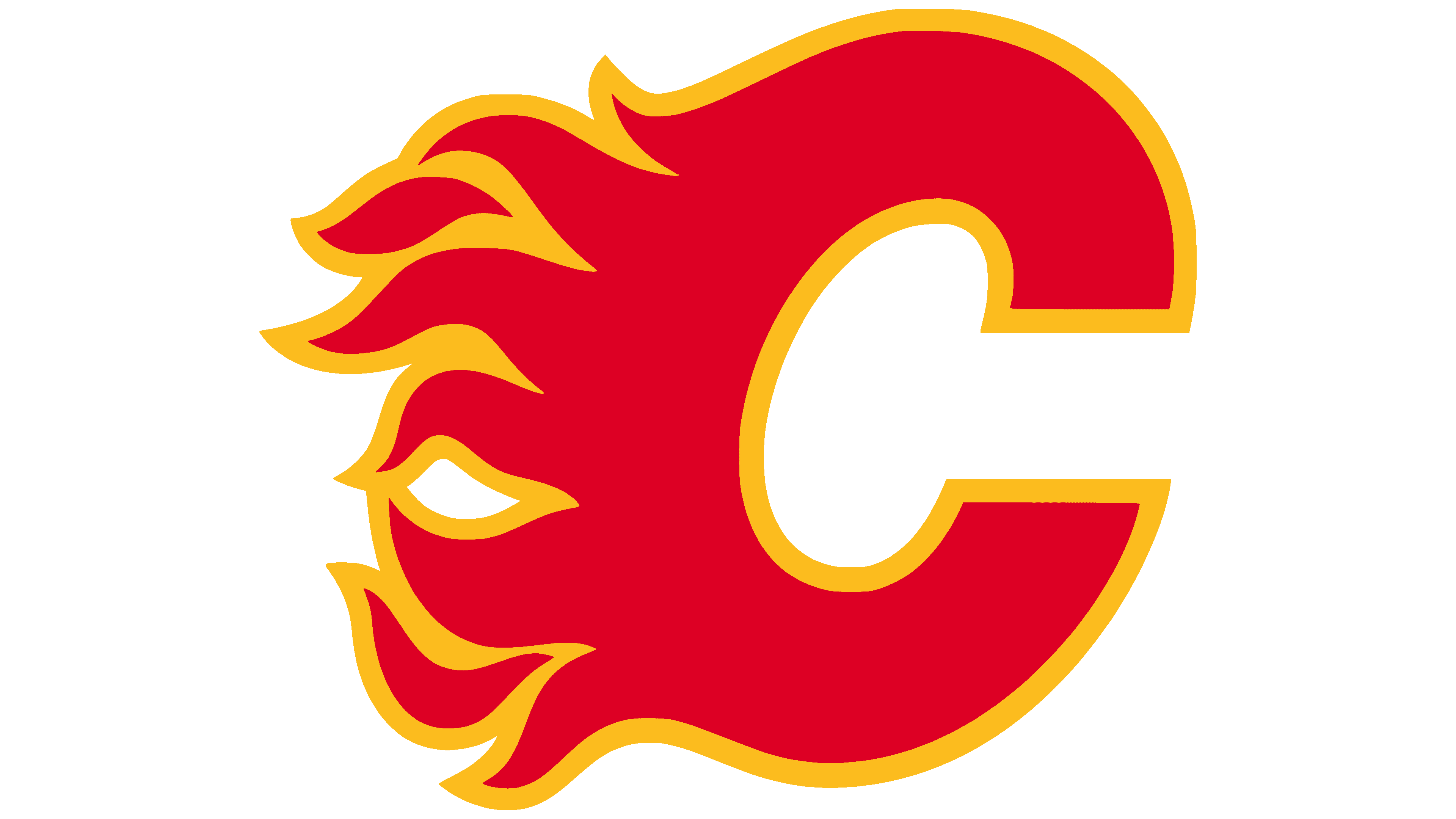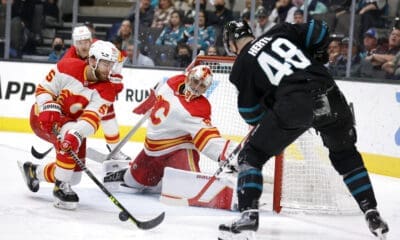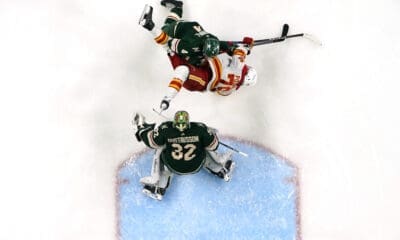Calgary Flames
Calgary Flames Round 1 Stats Recap: Shot Quality Matters
In their first round matchup, the Calgary Flames were out-attempted and out-shot by the Vancouver Canucks, but not out-chanced. That was the difference.

If you’ve been following along with the stats recaps this series, you’ll know that I track my own data from Flames games. The data provides an accurate number of offensive zone shot attempts and shots on goal, and details exactly which players contribute to shot attempts either as a shooter or passer. Critically, I also track whether or not each shot is a scoring chance, defined as any shot taking place from the home plate area diagrammed below.
The data provides a ton of context to each shooting play, allowing us to analyze the game in more depth than what the NHL's data allows for. Let's take a look at what the numbers reveal.
Team Stats
[Flames are represented in red, Canucks in blue. SA = shot attempts; SOG = shots on goal; SC = scoring chance; G = goal. Raw numbers are presented in the bars.]
At 5v5 overall, the Vancouver Canucks took more shot attempts and more shots on goal than the Calgary Flames. This comes as no surprise, as the Flames have been one of the most out-shot (i.e. one of the worst Corsi) teams in the league all season. In fact, they are the worst Corsi team to ever advance to the second round of the Stanley Cup Playoffs. So how do the Flames win?
Scoring Chances
It is essential for teams to generate scoring chances. 9 of Calgary's 11 total 5v5 goals in this series were scoring chances. For Vancouver, 6 of their 9 goals were scoring chances. It's a small sample, but 75% of 5v5 goals scored in this series (15 of 20) came off scoring chances.
In terms of success rates, Calgary scored on only 1.1% of non-scoring chance shot attempts (2 out of 186). Vancouver didn't fare much better, converting on only 1.3% of their non-scoring chance shot attempts (3 for 230). On the flip side, Calgary scored on 11.5% of their scoring chances (9/78), and Vancouver on 8.6% of theirs (6/70). Put another way, it would take about 8 times as many non-scoring chance shots to score the same amount of goals with scoring chance shots.
Note that these results do not consider that non-scoring chance shots can lead to bounces and rebounds that lead to scoring chances. For a future post it would be interesting to see how many scoring chances are the direct result of non-scoring chance shot attempts.
Period Splits
The first period was Calgary's worst in terms of the degree to which they were out-attempted, out-shot, and out-chanced by Vancouver. However, the Flames scored the most 5v5 goals of any period in the first with 5. Variance such as this is expected when working with small samples.
In the second period, Calgary tightened the gap in attempts, shots on goal, and scoring chances, but Vancouver still had the advantage in all metrics. Again, the relative sparsity of goals exaggerates the percent differences in these charts.
The third period is where the Calgary Flames come to play. We've seen this all season, and this series was no different. Calgary had the upper hand on Vancouver in every shot metric, most notably with respect to scoring chances.
Home vs Away Splits
At Rogers Arena in Vancouver – Games 1, 2, and 5.
At the Saddledome in Calgary – Games 3, 4, and 6.
Player Contributions
As we've seen all series, player contribution numbers tell us exactly who was involved in each shot attempt either as a shooter or passer. There are three types:
- Shot Attempt Contribution (SA-Co): This is the total number of shot attempts a player contributes to, either as the shooter or the primary or secondary passer to set up the shot.
- Shot on Goal Contribution (SOG-Co): This is the total number of shots on goal a player contributes to, either as the shooter or the primary passer.
- Scoring Chance Contribution (SC-Co): This is the total number of scoring chances a player contributes to, either as the shooter who takes a shot from the home plate scoring chance area, or as the primary passer who sets up the shooter in the scoring chance area.
Each player's contribution numbers are split based on home and away games. For the Canucks, lighter blue represents contributions that took place in Vancouver at Rogers Arena. Lighter red represents Flames' contributions that took place in Calgary at the Saddledome.
Shot Attempts
Shots on Goal
Scoring Chances
Daniel and Henrik Sedin are world-class hockey players. They set up in the offensive zone with ease, cycling between themselves until an opportunity to shoot presents itself. While the Sedins were tops in all three contribution categories, the Flames were able to limit the effectiveness of the twins o-zone play. The Sedins only scored 2 even-strength points each over the six game series.
Sam Bennett contributed to the most scoring chances for the Calgary Flames. The 18-year old is a major reason the Flames won this series, and if he burns through the first year of his entry-level contract it’ll be well worth it.
Other players we see at the top of the all-important scoring chance chart: Jiri Hudler, Johnny Gaudreau, Matt Stajan, Sean Monahan, TJ Brodie, Mikael Backlund and David Jones.
Enough said. On to Anaheim.
Questions or comments about the stats I track? Let me know in the comments below!
by ‘C’ of Stats









